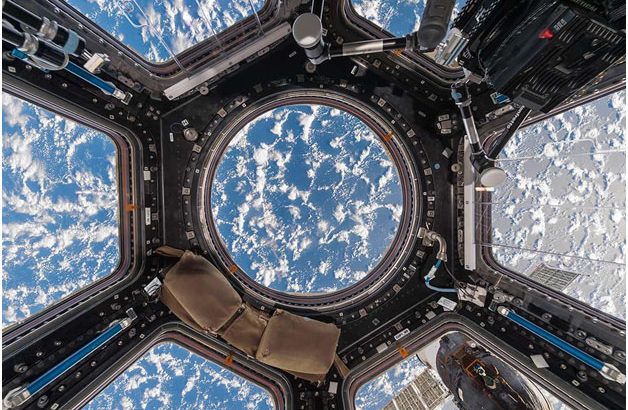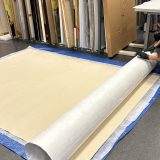
The International Space Station Archaeological Project
October 20, 2020
What is “space archeology”? Dr. Justin Walsh (Chapman University, Associate Professor of Art) and Dr. Alice Gorman (Flinders University, Australia) are pioneering a new sub-field by extending a traditionally earth-bound discipline to space. “Our insights will help mission planners and spacecraft designers understand how to improve habitats so that they promote a healthy social life for future crews,” Walsh notes.
Dr. Walsh and Dr. Gorman are the first to use material culture to study the International Space Station as a microsociety in a miniworld.
Dr. Walsh and Dr. Gorman are working with an international team of scholars and collaborators, The International Space Station Archaeological Project (ISSAP), to study the crew of the International Space Station as a “microsociety in a miniworld.” The ISSAP project extends the discipline of archaeology into a new context. As the first archaeological study of a space station, the project provides new information about successful and unsuccessful aspects of space habitation design.
“The International Space Station Archaeological Project is the first attempt to apply social-science perspectives on material culture to understanding how people create and maintain a society in a space habitat. We have developed techniques that are creative re-imaginings of archaeological methods, and we are revealing aspects of life in space that have never been articulated before.” – Dr. Justin Walsh
Since being awarded a $244,400 Discovery Grant from the Australian Research Council, the ISSAP team has completed their first two articles: “A methodology for research in space archaeology: The International Space Station Archaeological Project,” and “Archaeology in a Vacuum: Obstacles to and Solutions for Developing a Real Space Archaeology.” Dr. Walsh and Dr. Gorman also contributed essays to the book, Interior Space. A Visual Exploration of the International Space Station, which documents the workings of everything from the ISS’s labs and equipment to its research facilities on Earth.
The team also received approval from The National Aeronautics and Space Administration’s (NASA) Human Research Program Institutional Review Board for their study of NASA’s archive of historic photos documenting life onboard the ISS. ISSAP now has thousands of photos of the station’s occupation covering the period November 2000 through October 2007, and more are coming in regularly. In addition, ISSAP has received major data sets, including archived versions of the ISS Inventory Management System, a database that includes every item sent to the space station (more than 377,000 of them!).
Dr. Walsh and Dr. Gorman are working on two articles about the display of images and objects on the wall of a Russian module of ISS. They are also collaborating with the sociologist Paola Castaño (Cardiff University) on articles about how the cargo that returns from ISS is handled by ground crew, and what that tells us about life on ISS. A larger group of scholars from the US, Europe, and Australia, led by Dr. Walsh and Dr. Gorman, has submitted a pre-proposal to the US National Lab on ISS to have the present-day crew perform an archaeological survey of the interior of the space station.
The Chapman community will have a chance to learn more about the project when the first exhibition of photos of the International Space Station opens in Wilkinson’s Guggenheim Gallery on October 20. The exhibition, including a video-walkthrough, is available virtually. This exhibition of photos by Roland Miller and ESA astronaut Paolo Nespoli marks the 20th anniversary of continuous habitation of the ISS. A virtual reception will be held on November 2 to commemorate the occasion and celebrate the new exhibition.


